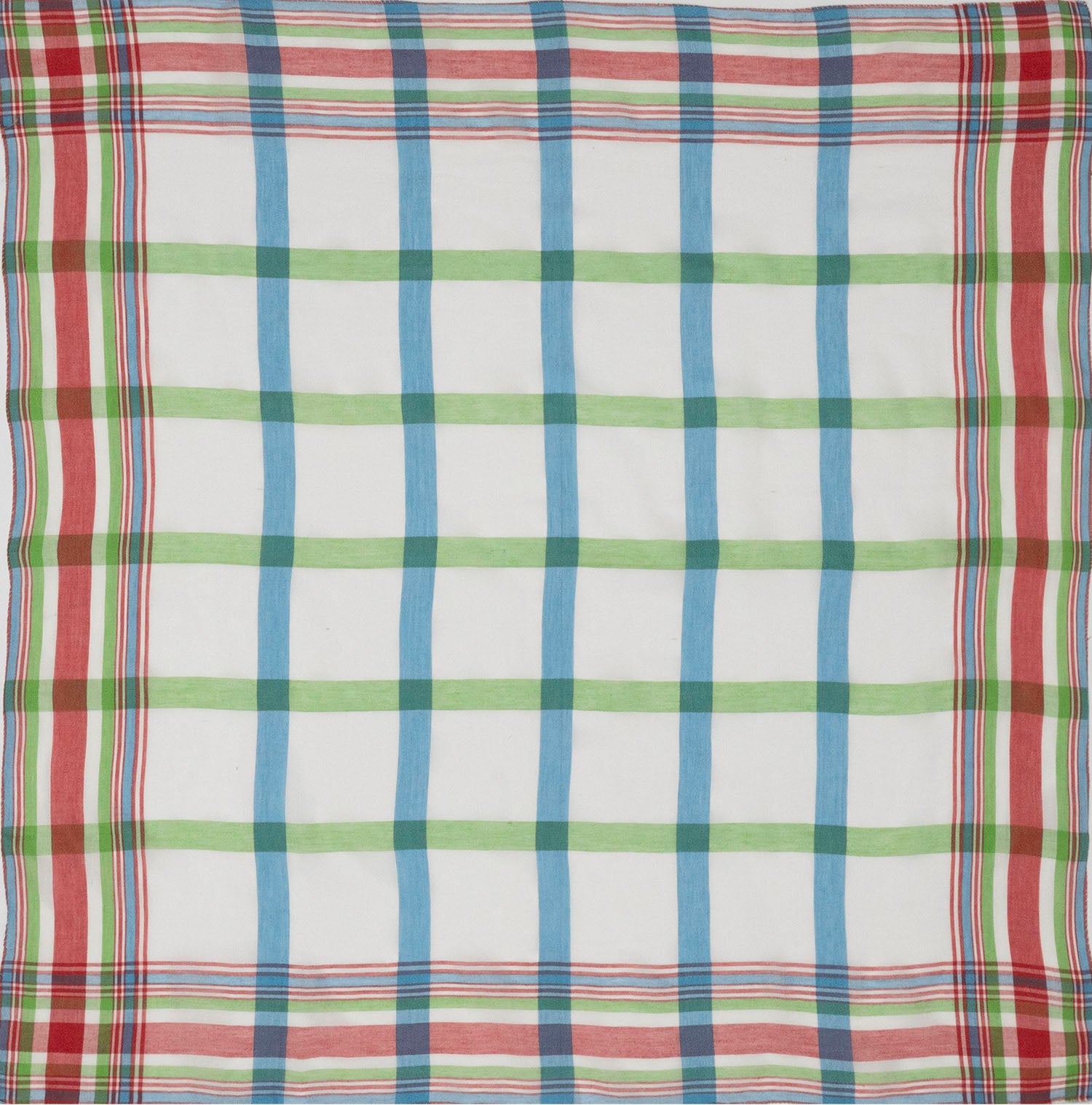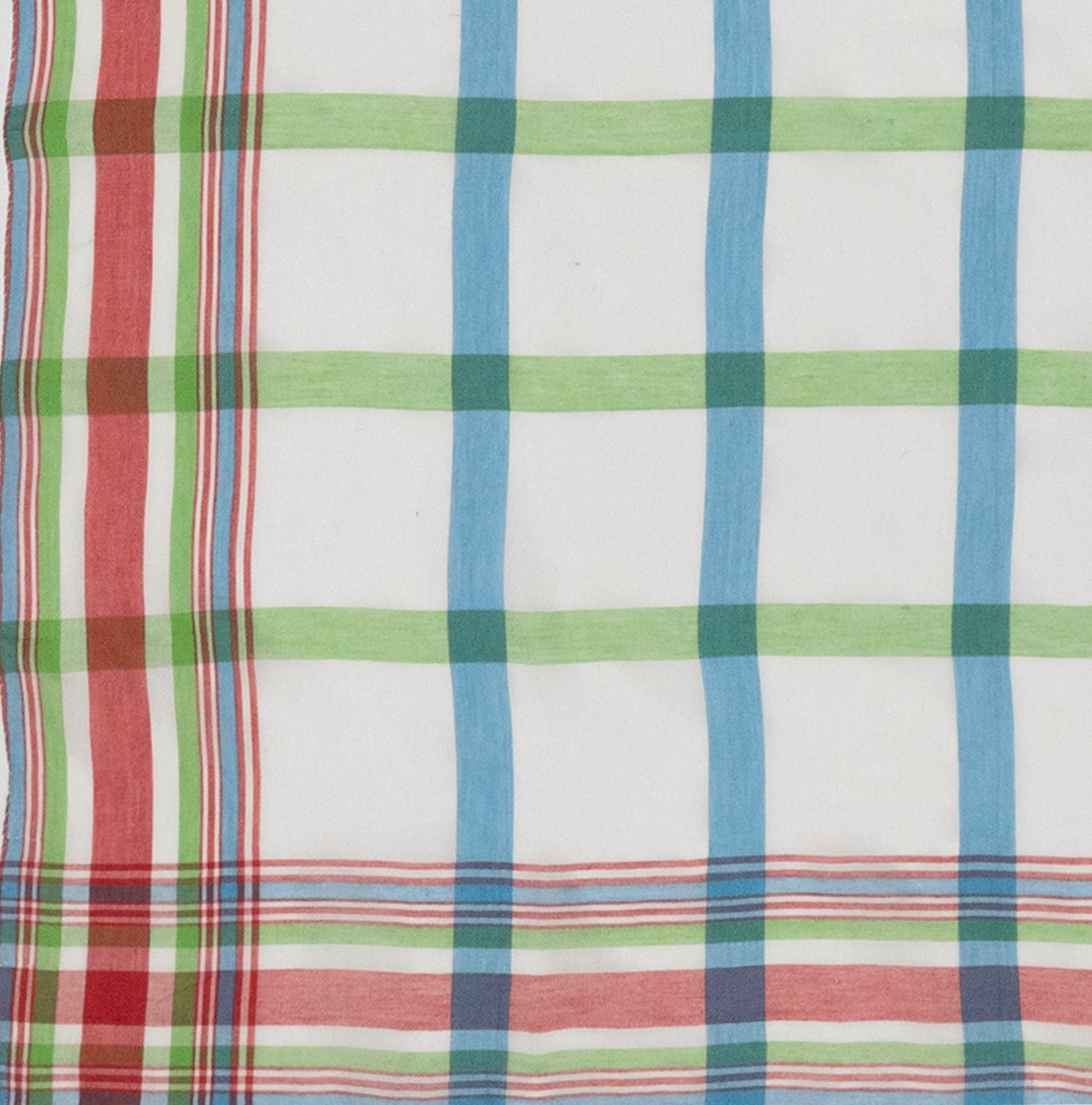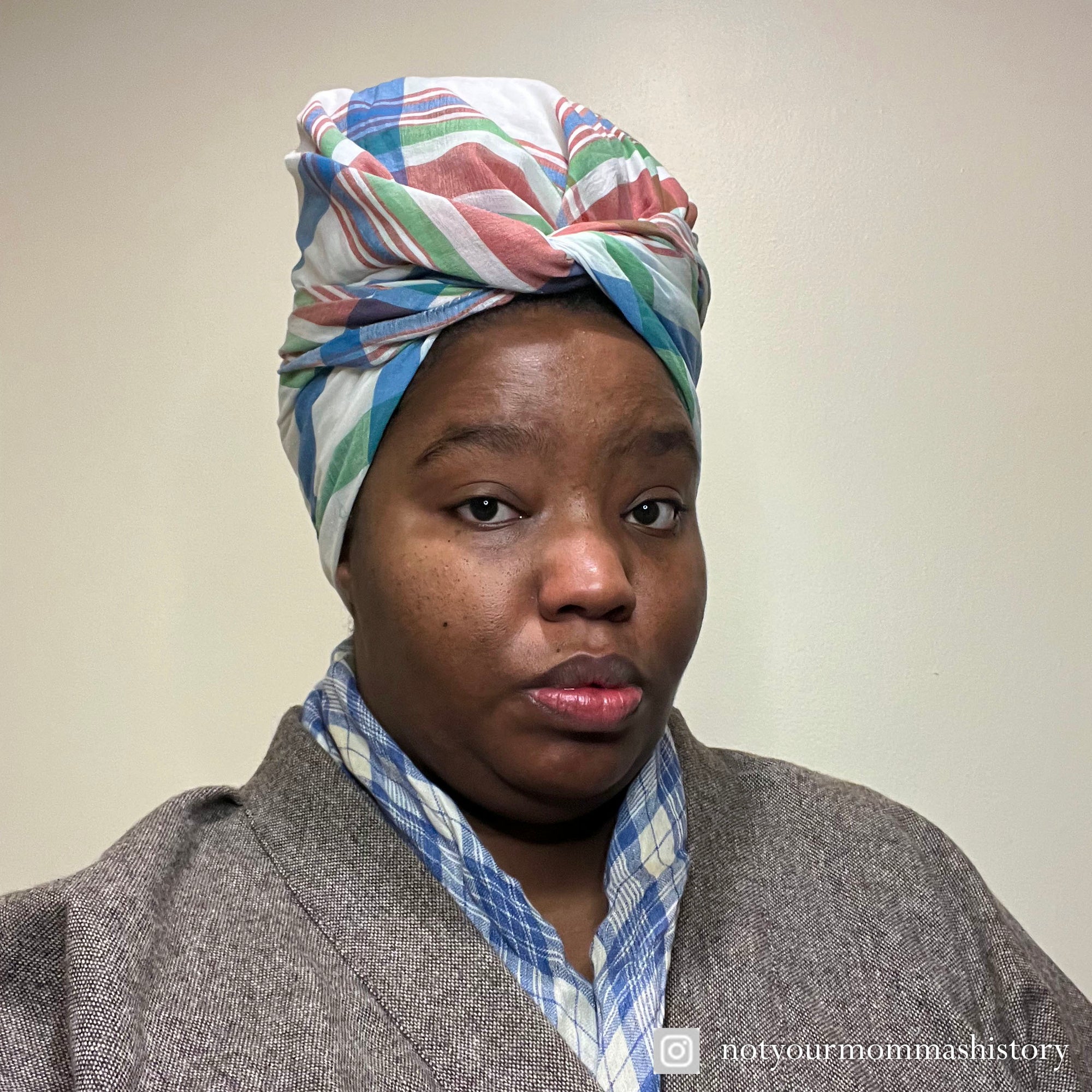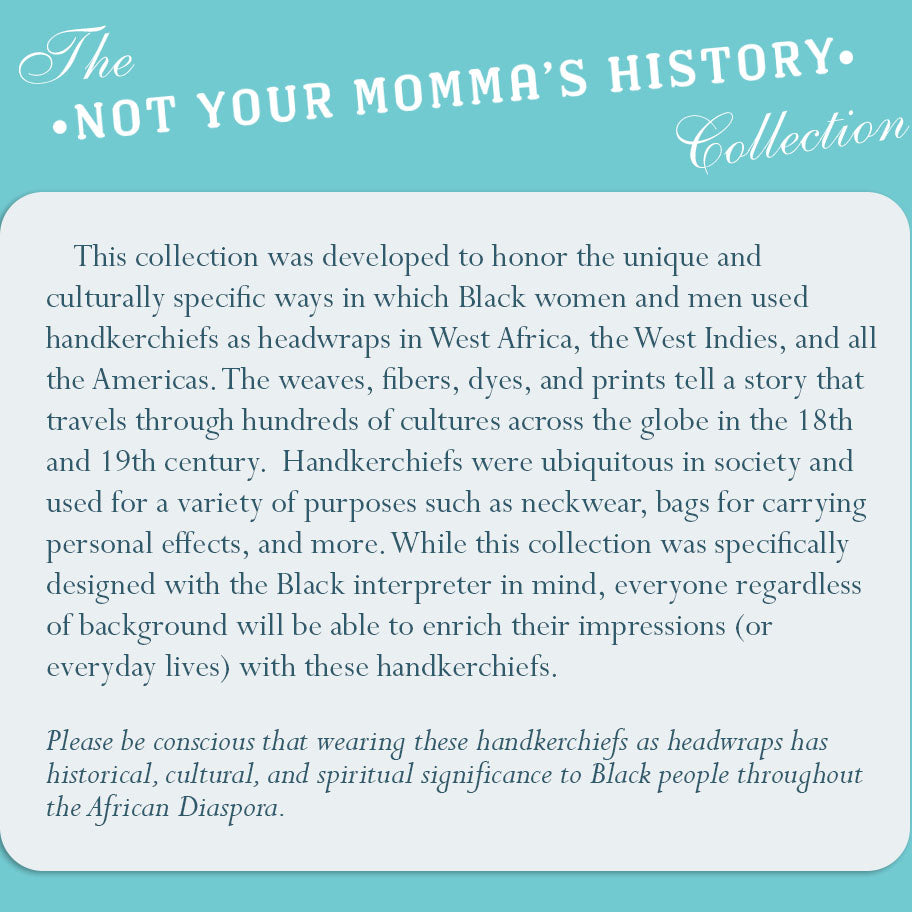Mrs. Toussaint's "Madras Plaid" Handerchief
$25.60 $32.00
HAN56
This beautiful early 19th century madras plaid handkerchief was inspired by miniature portraits painted of the Toussaint family in the collection of the New York Historical Society in conjuction with Not Your Momma's History.
Juliette Toussaint was born enslaved in Haiti, and was brought to the United States by her enslavers. When she was about 15 years old, Pierre Toussaint, a fashionable hairdresser in New York City, began courting her. Mr. Toussaint purchased her freedom before they were married. She is mentioned throughout her husband’s biography, Memoir of Pierre Toussaint, Born a Slave in St. Domingo by Hannah Farnham Sawyer Lee.
“Juliette was of a gay, cheerful disposition, and fully estimated the worth of her husband. Indeed, how could it be otherwise? She saw him universally respected, and treated as a friend by every one. As a hair-dresser for ladies, he was unrivalled: he was the fashionable coiffeur of the day; he had all the custom and patronage of the French families in New York. Many of the most distinguished ladies of the city employed him; we might mention not a few who treated him as a particular friend.”
The Toussaints became prominent members in the Haitian community in New York City, as well as philanthropists. Mrs. Toussaint donated the land for the headquarters of the African Mutual Aid Society to be built on.
Viewing their portraits we see their wealth and more. Rather then wearing the appropriated "fashion turbans" of the time Mrs. Toussaint wears a head wrap tied similarly to headwraps seen in other portraits of Black women in America and the West Indies in the early 19th century.
The design for this handkerchief was informed by the portrait, original madras designs and dye colors of the period, as well as its long history with the African community. Madras originating from India was first introduced in the 14th century, and by the 16th century, was one of the most popular trade goods in Eastern Africa. Senegalese artist, David Boilat's portraits from the Senegambia region depict it as prominent fashion in the 18th and 19th centuries. Madras was so popular that Western European traders were able to trade it for gold, salt, natural resources, and even enslaved persons.
- Measures approximately 36 inches square.
- Hand-loomed cotton.
- Semi-sheer and hand-hemmed.
- About Our Handkerchiefs
Please select all options.






